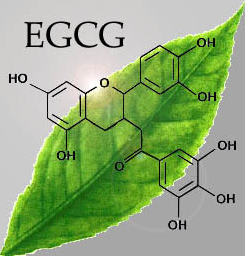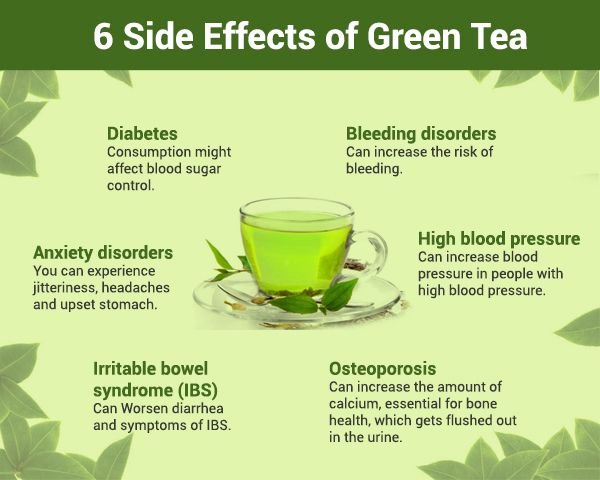
EFFECT OF EGCG (EPI GALLO CATECHIN 3-GALLATE) ON DIABETES
A study by Waltner-Law et al. provided compelling in vitro evidence that EGCG decreases glucose production of H411E rat hepatoma cells. The investigators showed that EGCG mimics insulin, increases tyrosine phosphorylation of the insulin receptor and the insulin receptor substrate, and reduces gene expression of the gluconeogenic enzyme phosphoenolpyruvate carboxykinase.
Recently, green tea and green tea extracts were demonstrated to modify glucose metabolism beneficially in experimental models of type II diabetes mellitus. In addition, EGCG ameliorates cytokine-induced B cell damage in vitro and prevents the decrease of islet mass induced by treatment with multiple low doses of streptozotocin in vivo.
Lambert et al. showed that intragastric administration of EGCG at a dose of 75mg/ kg resulted in a Cmax of 128mg/1 total plasma EGCG and a terminal half-life of 83 minutes. Furthermore, in humans an oral intake of EGCG at a dose of 50mg (0.7mg/kg) resulted in a Cmax of 130mg/l total plasma EGCG and a terminal half-life of 112 minutes. These results indicate that rodents must be orally administered 100- to 600-fold more EGCG (depending on whether they are administered by gavage or by feed admixture) to achieve similar plasma concentrations as those found in humans. Total plasma EGCG concentrations shown to be efficacious in mice and rats can be reached by an intake of low to moderate doses of EGCG in humans.
EFFECTS ON OBESITY

The effects of tea on obesity and diabetes have received increasing attention. Tea catechins, especially EGCG, appear to have anti-obesity and antidiabetic effects. African black tea extract has been shown to suppress the elevation of blood glucose during food intake and reduce the body weight in KK-A(y)/TaJcl diabetic mice. Although few epidemiological and clinical studies have shown the health benefits of EGCG on obesity and diabetes, the mechanisms of its actions are emerging based on various laboratory data. These mechanisms may be related to certain pathways, such as through the modulations of energy balance, endocrine systems, food intake, lipid and carbohydrate metabolism, and redox status.
EXPERIMENT
A double-blind, placebo-controlled, cross over design study showed that consumption of a beverage containing green tea catechins, caffeine, and calcium increases 24-h energy expenditure by 4.6%, but the contribution of the individual ingredients could not be distinguished. It was suggested that such modifications were sufficient to prevent weight gain.
Observation:
It has been reported that the body weights of rats and their plasma triglyceride, cholesterol, and low-density lipoprotein cholesterol were significantly reduced by feedings of Oolong, black, and green tea leaves to the animals. In addition, the inhibition of growth and suppression of lipogenesis in MCF-7 breast cancer cells may be through down-regulation of fatty acid synthase gene expression in the nucleus and stimulation of cell energy expenditure in the mitochondria
When fed to mice, EGCG purified from green tea decreased diet-induced obesity in mice by decreasing energy absorption and increasing fat oxidation. The increased and prolonged sympathetic stimulation of thermogenesis by the interaction between polyphenols and caffeine could be of value in assisting the management of obesity.
Inference:
Recent data from human studies indicate that the consumption of green tea and green tea extracts may help reduce body weight, mainly body fat, by increasing postprandial thermogenesis and fat oxidation. In a randomized, double-blind, placebo-controlled, cross-over pilot study, six overweight men were given 300mg EGCG per day for two days. Fasting and postprandial changes in energy expenditure and substrate oxidation were assessed. Resting energy expenditure did not differ significantly between EGCG and placebo treatments, although during the first postprandial monitoring phase, respiratory quotient values were significantly lower with EGCG treatment compared to the placebo.
These findings suggest that EGCG alone has the potential to increase fat oxidation in men and may thereby contribute to the anti-obesity effects of green tea. However, more studies with a greater sample size and a broader range of age and body mass index are needed to define the optimal dose.
ADVERSE EFFECTS OF GREEN TEA

Although green tea has several beneficial effects on health, the effects of green tea and its constituents may be beneficial up to a certain dose yet higher doses may cause some unknown adverse effects. Moreover, the effects of green tea catechins may not be similar in all individuals.
EGCG of green tea extract is cytotoxic, and higher consumption of green tea can exert acute cytotoxicity in liver cells, a major metabolic organ in the body.
Another study found that higher intake of green tea might cause oxidative DNA damage of hamster pancreas and liver. Yun et al. clarified that EGCG acts as a pro oxidant, rather than an antioxidant, in pancreatic B cells in vivo. Therefore, high intake of green tea may be detrimental for diabetic animals to control hyperglycemia.
At a high dose (5% of diet for 13 wk), green tea extract induced rats a thyroid enlargement (goiter) in normal rats. This high-level treatment modified the plasma concentrations of the thyroid hormones. However, drinking even a very high dietary amount of green tea would be unlikely to cause these adverse effects in humans.
Harmful effects of tea overconsumption (black or green) are due to three main factors:
(1) its caffeine content,
(2) the presence of aluminum, and
(3) the effects of tea polyphenols on iron bioavailability.
Green tea should not be taken by patients suffering from heart conditions or major cardiovascular problems.
Pregnant and breast-feeding women should drink no more than one or two cups per day, because caffeine can cause an increase in heart rhythm.
It is also important to control the concomitant consumption of green tea and some drugs, due to caffeine’s diuretic effects. Some studies revealed the capacity of tea plants to accumulate high levels of aluminum. This aspect is important for patients with renal failure because aluminum can be accumulated by the body, resulting in neurological diseases; it is therefore necessary to control the intake of food with high amounts of this metal. Likewise, green tea catechins may have an affinity for iron, and green tea infusions can cause a significant decrease of the iron bioavailability from the diet.
CONCLUSIONS
Laboratory studies showed the health effects of green tea. As the human clinical evidence is still limited, future research needs to define the actual magnitude of health benefits, establishes the safe range of tea consumption associated with these benefits, and elucidates the mechanisms of action. Development of more specific and sensitive methods with more representative models along with the development of good predictive biomarkers will give a better understanding of how green tea interacts with endogenous systems and other exogenous factors. Definitive conclusions concerning the protective effect of green tea have to come from well-designed observational epidemiological studies and intervention trials. The development of biomarkers for green tea consumption, as well as molecular markers for its biological effects, will facilitate future research in this area.

ABBREVIATIONS
GTPs: Green tea polyphenols UDP: Uridine Di Phospatase, IQ: 2-amino-3-methyl
Imidazol (4,5-1) Quinoline; Mediterranean Islands, SDLT: Dependent Glucose Transporter MEDIS: Sodium




